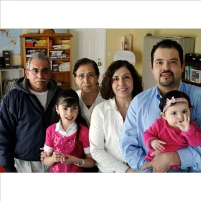Americans Living with Relatives Hits 60-Year High
Thursday, October 06, 2011
 (photo: Portals to Partners)
(photo: Portals to Partners)
Once the layoffs started and the economy shrunk during the Great Recession, Americans turned to relatives for shelter, causing a significant increase in the number of multi-generational households. The share of Americans living in such households, one out of six, is the highest measured since 1950.
According to the Pew Research Center, from 2007 to 2009, the number of Americans living in multi-generational households increased by almost 5 million, from 46.5 million to 51.4 million. During the same period, the number of people living in other types of households rose by only 333,000.
Moving in with parents or other relatives helped lessen money troubles. The Pew study found that multi-generational homes had a lower poverty rate (11.5%) than other households (14.6%). The benefit was especially true for the unemployed. The poverty rate in 2009 was 17.5% for those out of work and living in multi-generational households, compared with 30.3% for the jobless in other households.
White Americans were much less likely to live in multi-generational households (13.1%) than Asians (25.8%), blacks (23.7%) and Hispanics (23.4%).
Of the 113.6 million households in the country, 4.2 million consisted of three generations.
-Noel Brinkerhoff, David Wallechinsky
Fighting Poverty in a Bad Economy, Americans Move in with Relatives (by Rakesh Kochhar and D’Vera Cohn, Pew Research Center)
- Top Stories
- Unusual News
- Where is the Money Going?
- Controversies
- U.S. and the World
- Appointments and Resignations
- Latest News
- Musk and Trump Fire Members of Congress
- Trump Calls for Violent Street Demonstrations Against Himself
- Trump Changes Name of Republican Party
- The 2024 Election By the Numbers
- Bashar al-Assad—The Fall of a Rabid AntiSemite






Comments